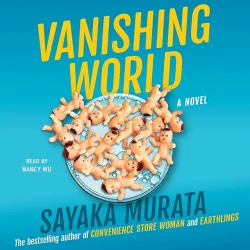
Originally published on metropolis.co.jp on July 2013

Back in the 1980s and ’90s, a dance revival was taking the world’s inner-city basements by storm. The Lindy Hop—a Harlem swing dance from the pre-war Jazz Age—was reborn when New York’s Sandra Cameron Dance Center invited two of the dance’s founding fathers, Frankie Manning and Al Minns, to teach a new generation. Though the Lindy Hop spread to the likes of London, California, and Sweden, Japan was yet to see the movement tear up its dance halls.
Enter competitive dancer Hiro Yamada in 1998. Desperate to learn the latest craze in a city lacking any instructors, he turned to another new fad—the internet—to get hold of an instructional videotape. But mastering the moves was a whole different story. “Do you think you could become a black belt in judo just by watching YouTube clips?” he chuckles. After much deliberation and the support of a few like-minded contacts, Yamada was able to invite the granddaddy himself, Frankie Manning, to give Tokyo’s first workshop.

In a matter of weeks, the Tokyo Swing Dance Society (TSDS) was born. And today it remains at the heart of the city’s scene, spreading its love of the Lindy Hop across the metropolis and teaching new generations how to groove.
At TSDS’ weekly Swing Sundays, beginners and pros can jump ’n’ jive with the best of them. “Our philosophy is not just to show the steps, but also to teach people how to communicate with their partner, how to lead and follow, which is after all the very core of social dancing,” says Yamada. “Just imagine, there’s no point learning what a knife and fork are if afterwards you don’t how to use them.” The society also boasts a steady turnout of both sexes, meaning a more even gender ratio compared to most swing dance communities.
Those keen to put the moves into action can head to a biweekly Swing Night in Omotesando, which also offers a short introductory lesson beforehand.
“While you can’t learn to be a great dancer in a thirty-minute lesson, these nights are a great opportunity to learn the basics and get a taste of what the scene is all about,” Yamada adds.

Aside from regular events, the TSDS also hosts some of the capital’s best big band bashes—including their thrice-yearly Omotesando Swingin’ Ball—with some of the country’s top jazz performers and a clientele who most definitely dress to impress. Past highlights have included workshops with Tony Award-nominated swing choreographer Ryan Francois and his partner, Jenny Thomas.
As Lindy Hoppers have grown in number, so too has the Tokyo scene, with new schools appearing like Swing Jack and Dancing Bus. But what really separates it from other more populous movements such as salsa (“All [Latin] music sounds the same to me!” laughs Yamada), is the accompanying fashion. Swing dancing is part of a subculture whose adherents sure as hell know how to wear some red lippy and a decent set of brogues. The late-’90s piqued further interest in all things Jazz Age with the explosion of a swing revival (see Big Bad Voodoo Daddy, The Brian Setzer Orchestra, Squirrel Nut Zippers and the films Swing Kids and Swingers) and neo-burlesque. The result? An army of 20- and 30-somethings who embrace vintage style as a way of life—and that includes getting to grips with dance steps of bygone eras.
And it’s not just the young folks who are getting involved. “For many of the older Japanese generation, this is their first experience with the dance,” explains Yamada. “As it began to grow in popularity in the West the first time round, the Second World War hit and all traces of ‘enemy music’ were withdrawn from popular culture.” After WWII, the occupying forces brought the new style to Japan. Postwar partiers took a particular liking to the relatively simple 6-count jiruba, or jitterbug—which offered light relief in comparison to its tougher 8-count sister, the Lindy.

In recent years, swing has spread across Asia. Korea boasts an expanding scene, while Singaporean Sing Lim, creative director for Jitterbugs Swingapore, is one of the genre’s most formidable dancers. But what’s next for the future of the dance in Japan? Interest continues to climb, but Tokyo’s jazz joints are a little slow on the uptake. Many venues are unable to provide adequate dance space, while others fall foul of the no dancing rules recently enforced in the city. As a result, the best opportunities for social dancing still lie in the hands of the societies themselves, who hold regular nights and collaborate on annual events—such as the Shinjuku Jazz Festival.
For now, it looks like Tokyo still has a little catching up to do to match London and New York, where classes and events overflow most nights of the week. Those who’ve watched the scene burgeon into a whole community, though, remain hopeful. For those looking for a glamorous old time, it’s hard to resist the urge to slick back your hair, get on your glad rags and get into your swing.
SWING SUNDAYS

With two left feet and a Japanese vocabulary extending to some 20 words, walking into class was an apprehensive business. The last time I tried swing dancing back in London, I was quickly cast aside and deemed a lost cause by an older (and rather sweaty) Italian gentleman named Mario. But my worries faded as soon as I met Hiro Yamada and his partner in crime, Yoko. Welcoming me with open arms, they introduced me to the regulars before adding an English translation to their lessons just for my benefit.
We began with some simple warm-up stretches before starting the four-hour workshop, which went on to cover the basic moves and more importantly, how to lead and follow your partner. As the lesson progressed, we moved onto some more advanced steps including twists, turns and even the Charleston.
For a beginner, the class was tough at times, especially as we moved on to more advanced sequences. However, the personalized support offered by the instructors, and being able to practice with different partners, kept me on track and left me looking forward to becoming a future swing sensation.
Every Sun 1-5pm, ¥2,000. Seta Chiku Kaikan. 4-18-11 Seta, Setagaya-ku. Nearest stn: Yoga. www.impetus.ne.jp
Other classes and swingin’ evenings in Tokyo:
- Swing Night: Bi-weekly DJ-ed swing event with a beginners’ class beforehand. All levels welcome.
- Tokyo Salon, ¥2,000 (w 1/d). Nearest stn: Omotesando. www.swingcats.jp
- Dancing Bus: Sun 2-4:40pm, ¥2,000. www.dancingbus.com
- Swing Jack: Monthly (first Sat) 7-11pm, ¥2,500 (w 1/d). They also do Lindy Hop classes. www.swing-jack.com
JUKEBOX JIVE
Perfecting the Lindy Hop isn’t just about the moves—you’ve gotta look money too, baby! Try these joints on for size.
Haight & Ashbury – Head into the heart of Shimokitazawa to get the perfect Lindy look. http://haightandashbury.com
Chicago – Americana and Japanese-style vintage galore. Jingumae, Omotesando, Kichijoji and Shimokitazawa. www.chicago.co.jp
Honeywood Used clothing – Secondhand clothing store that specializes in US fashion from the ’60s to the early ’90s. http://honeywood.jp
New York Joe Exchange – Secondhand clothing store chain with items from virtually every decade. Stores in Shimokitazawa and Kichijoji. www.newyorkjoeexchange.com







